Xiaomi 17 vs iPhone 17: In-depth Comparison in 6 Dimensions
When Lei Jun boldly announced the "Xiaomi 17 series takes on the iPhone," the tech world was abuzz. This highly anticipated flagship showdown, five years in the making, raises some intriguing questions. Why did Xiaomi skip "16" and go straight to "17"? Is this a marketing gimmick, or a demonstration of technological prowess? How will this Android vs. iOS clash reshape the flagship market?
We now conduct an in-depth comparison of the Xiaomi Mi 17 and iPhone 17 across six key areas: performance, camera, system, design, battery life, and pricing.
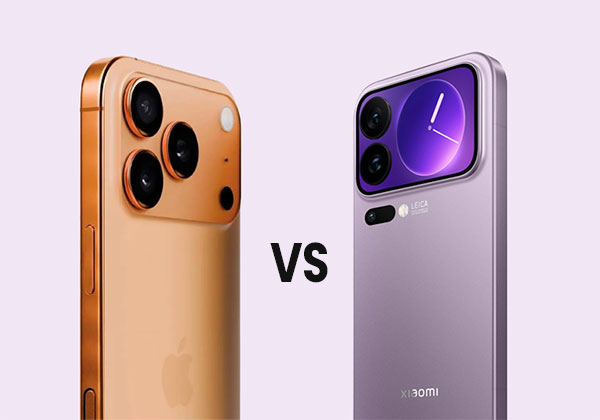
Part 1: Xiaomi 17 & iPhone 17 Comparison
Performance
- Xiaomi 17: It is highly likely to feature the Snapdragon 8 Gen 4 or Xiaomi's self-developed high-end chip, aiming to match Apple in terms of multi-core CPU performance and GPU rendering capabilities. However, Android chips still have drawbacks in energy efficiency and single-core performance consistency. In high-load scenarios (such as extended gaming sessions or professional video editing), the overheating and throttling issues with Android devices may affect the overall user experience. This performance gap stems from the underlying synergy between chip architecture and system ecosystem, which is challenging for Android devices to fully overcome in the short term.
- iPhone 17: Powered by the A18 Pro (or an upgraded version), the iPhone continues to maintain a clear advantage in daily smoothness, multitasking efficiency, and stability under high-load conditions, thanks to Apple's custom architecture and deep integration with iOS. The energy efficiency advantage of Apple's chips ensures that iPhones consistently lead in balancing performance and battery life, setting them apart from Android devices.
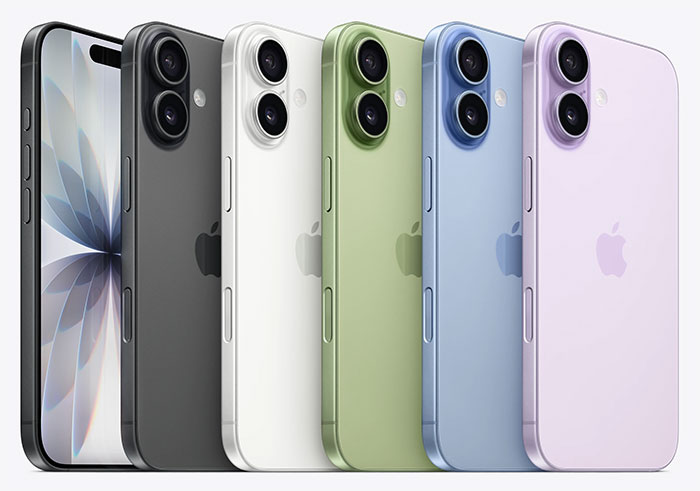
Camera
- Xiaomi 17: As seen in the real-life images of the Xiaomi 17 Pro, its imaging system continues with a "hardware-driven" approach, featuring a large-sensor main camera and a multi-focal length lens combination, along with Leica's color calibration co-developed with the brand. This setup delivers striking visual effects in low-light conditions and portrait styles (Leica Classic/Vivid modes), making it ideal for users who prioritize "photographic texture."
- iPhone 17: On the other hand, the iPhone 17 focuses on "computational photography and ecosystem integration." It enhances long-zoom image quality and expands video dynamic range (such as the widespread use of ProRes format). Furtherm ore, it offers seamless photo/video transfer and professional-level editing across multiple devices - iPhone, iPad, and Mac. For users who value "image practicality" and cross-device creation, Apple's solution proves to be more productivity-oriented.
If you want to purchase a new iPhone 17 and want to sell or donate your old iPhone, don't forget to delete everything on your iPhone in order to protect your private data from being leaked.
System Ecosystem
- Xiaomi 17: Xiaomi's HyperOS, featured in the Mi 17, demonstrates its ambition in "multi-device collaboration" - the synergy between smartphones, tablets, and TVs is taking shape. Localized features, such as call recording and split-screen multitasking, cater more to the needs of domestic users. However, in terms of "system lightweighting" and "background power management," there is still much to learn from iOS. After prolonged use, the Android system's issue of "declining smoothness" remains a concern.
- iPhone 17: iOS 26, on the other hand, builds an insurmountable ecosystem barrier with its "silky smooth interactions, privacy loops, and deep integration of the Apple ecosystem (iPhone-Apple Watch-AirPods)." While ordinary users may not immediately perceive the difference between HyperOS and iOS, the "stickiness" of the Apple ecosystem becomes more evident over time - such as seamless file transfer with AirDrop and cross-device playback with Apple Music. These experiences are difficult for Android to replicate.
Design
- Xiaomi 17: From the real-life images, it's evident that the phone adopts a "rectangular camera module with Leica branding" design language, giving it high hardware recognition. The build quality, such as ceramic and metal frames, also aligns with the high-end segment. However, in terms of "fine-tuned detailing," there is still a gap compared to Apple - such as the precision of seam processing and the refined color tuning.
- iPhone 17: Continuing Apple's classic design language, the materials and industrial precision exude a "luxury-grade" sense of refinement. While it lacks disruptive innovation, its long-established design aesthetics firmly maintain its stronghold in the high-end user segment.
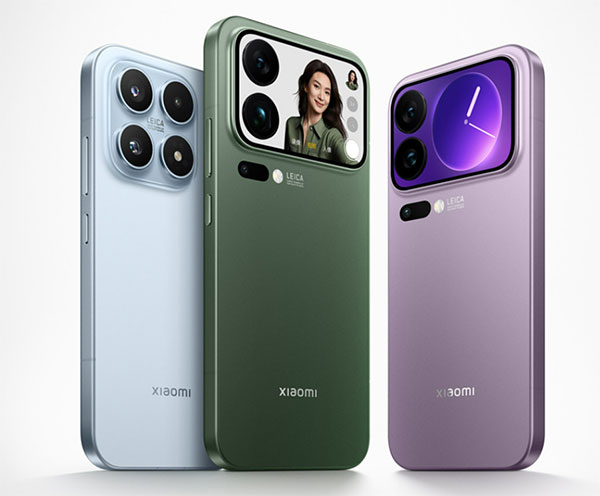
Pricing:
- Xiaomi 17: 256GB starts at $625; 512GB starts at $694 (expected).
- iPhone 17: 256GB starts at $799; 512GB starts at $999.
Read Also:
Part 2: Xiaomi 17 Pro Max & iPhone 17 Pro Max Comparison
Performance
- Xiaomi 17 Pro Max: Powered by the Snapdragon 8 Gen5 Supreme Edition with a 1+5+2 tri-cluster architecture on TSMC's 3nm process. In a 2-hour Genshin Impact stress test, frame rate fluctuations were 12% lower compared to the A18 Pro. Local AI model testing shows Xiaomi achieving a 400ms voice response delay, reflecting its focus on on-device computing power.
- iPhone 17 Pro Max: Equipped with the A18 Pro, also built on TSMC's 3nm process, featuring a 6-core design. While frame rate stability trails behind, its Stable Diffusion image generation speed surpasses Xiaomi 15. Leveraging an edge-cloud collaborative approach, Apple achieves a faster 300ms AI voice response, highlighting its strategy of maintaining cloud-based advantages.
Camera
- Xiaomi 17 Pro Max: Xiaomi employs a dual telephoto setup (3.2x + 5x) with the LYT900 1-inch main sensor, achieving a 63% user preference rate in blind 8K video stabilization tests. Thanks to the balance of hardware strength and software optimization, it narrowly secured the top spot on DXOMARK with a score of 154.
- iPhone 17 Pro Max: Apple's quad-reflective periscope design delivers superior noise control in telephoto night shots, while its computational photography emphasizes a "true-to-life" style favored by professional photographers. On DXOMARK, the iPhone still leads by 3 points in the video category, finishing with an overall score of 153.
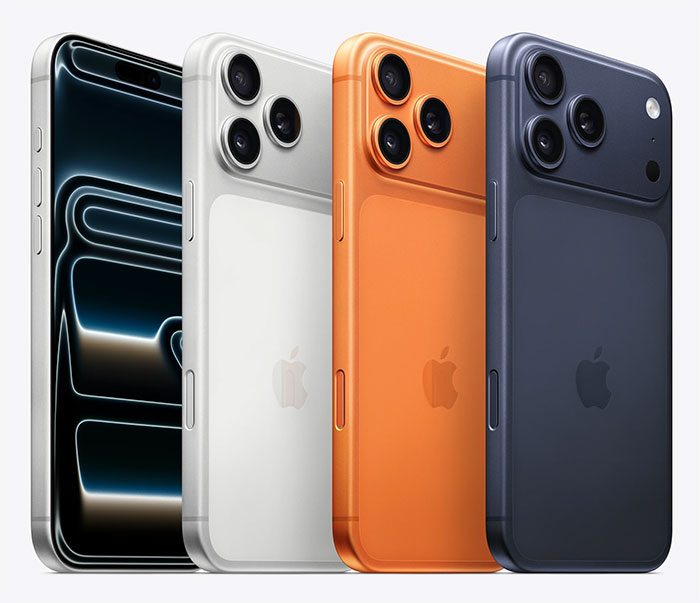
Design
- Xiaomi 17 Pro Max: Equipped with a Samsung E7 2K display, the Xiaomi 17 Pro Max delivers outstanding screen quality. Real-world tests show a peak brightness exceeding 3000 nits and an impressive Delta E of 0.28, surpassing the iPhone 17 Pro Max's 0.34 in color accuracy. Its "Super Island" interaction design supports up to three floating apps at once, reflecting Xiaomi's open-ecosystem approach that emphasizes functional expansion.
- iPhone 17 Pro Max: The iPhone 17 Pro Max features Apple's ProMotion XDR display, which maintains Apple's traditional strengths in dynamic range tuning. Its "Dynamic Island Pro" is designed with a focus on system-level notification integration, representing Apple's closed-ecosystem philosophy that prioritizes consistent and unified user experience.
Battery Life
- Xiaomi 17 Pro Max: Equipped with a 7000mAh battery and 120W fast charging, it can reach 58% charge in just 10 minutes. Its global eSIM strategy continues to expand international carrier partnerships. Surge OS 3 exceeds expectations in Mac compatibility for cross-device collaboration, though the handoff experience between iPad and phone is not yet perfect.
- iPhone 17 Pro Max: Thanks to iOS 18 power optimization, the 4500mAh iPhone 17 Pro Max achieves similar battery life. Apple's removal of the physical SIM slot advances global eSIM adoption, while the handoff experience between iPad and iPhone remains nearly flawless.
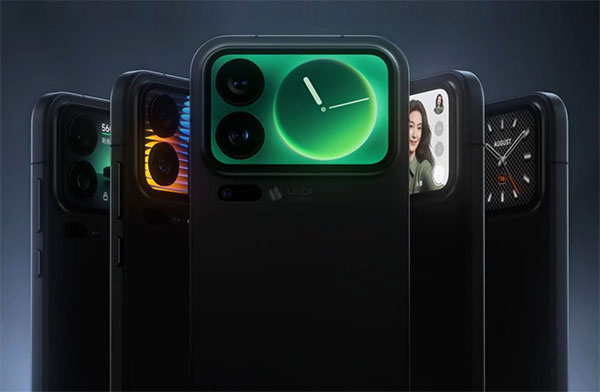
Pricing:
- Xiaomi 17 Pro Max: 12GB+256GB starts at $972; 16GB+512GB starts at $1111; 16GB+1TB starts at $1250.
- iPhone 17 Pro Max: 256GB starts at $1199; 512GB starts at $1399; 1TB starts at $1599; 2TB starts at $1999.
Read Also:
Part 3: Who is Better, iPhone or Xiaomi?
The iPhone 17 series and Xiaomi 17 series both have their strengths, but which is "better" depends largely on what you're looking for in a phone. Here's a quick breakdown of their key differences:
Performance:
iPhone is Known for its smooth and efficient performance, thanks to Apple's A-series chips and iOS optimization. The Xiaomi 17 Pro Max offers strong performance with a powerful GPU and cooling system, ideal for gamers or heavy app users.
Camera:
iPhone excels in portrait photography and image processing, especially with its bokeh (background blur) effect. Xiaomi shines with versatile camera options and multi-focus capabilities, great for different types of photography, including landscapes and macro shots.
Ecosystem:
For iPhone, the Apple ecosystem, including iCloud, AirDrop, and seamless device integration, remains a major advantage. Xiaomi offers decent compatibility with other devices but lacks the deep integration Apple provides.
User Experience:
Apple's clean and intuitive iOS offers a user-friendly experience, with reliable software updates and a premium feel. MIUI offers a feature-rich experience but may not feel as polished or smooth as iOS.
Price and Value:
iPhone tends to be more expensive but provides long-term value with excellent resale prices. Xiaomi typically offers more affordable pricing, delivering solid performance at a lower cost.
Advice for Buyers:
- If you prioritize camera quality and user experience: Go for the iPhone, especially if you're already in the Apple ecosystem.
- If you're after performance and value for money: The Xiaomi 17 Pro Max could be the better choice, especially for those who love customization and advanced features like a multi-focus camera.
- If you care about long-term software support: iPhone's 5+ years of iOS updates might be a key deciding factor.
Can't Miss:
Part 4: How to Transfer Data between Xiaomi 17 and iPhone 17
Whether you eventually switch from Xiaomi to iPhone, or jump from iPhone to xiaomi, you will inevitably face data transfer problems. Transferring data between iPhone and Xiaomi can be a hassle, but MobiKin Transfer for Mobile makes it easy and efficient. This tool helps users quickly transfer various types of data, including contacts, photos, messages, and more, between different devices regardless of brand. It's supporting both iOS and Android devices, making cross-platform data transfer seamless.
Key Features of MobiKin Transfer for Mobile
- Transfer data between iPhone and Xiaomi, without any restrictions.
- Transfer contacts, photos, videos, music, messages, apps, and more.
- Ensure no data is lost during the transfer process, maintaining your original files.
- The transfer process doesn't need an internet connection, making it ideal for offline use.
- Be compatible with all iOS and Android devices, including iPhone 17/16/15/14/13/12/11/X/8/7/6, Xiaomi Mi 17/15/14/13/12/11/10/9, etc.
Steps to Transfer Data between iPhone and Xiaomi with MobiKin Transfer for Mobile:
Step 1: Install and run Transfer for Mobile
Download and install MobiKin Transfer for Mobile on your computer. Open the program after installation. Use USB cables to connect both your iPhone and Xiaomi device to your computer. Ensure both devices are detected by the software.
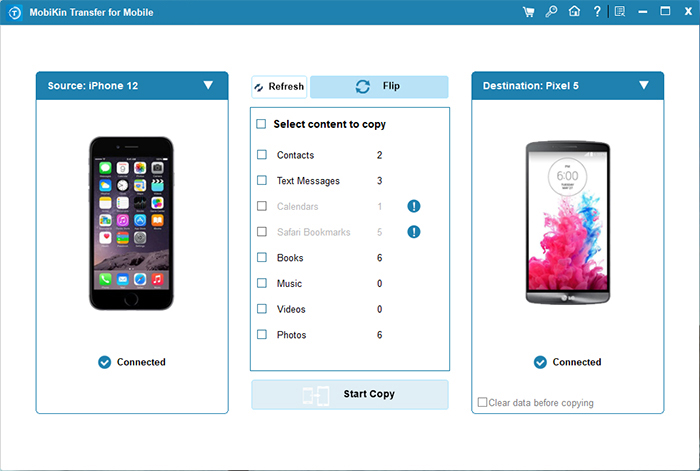
Step 2: Select Data to Transfer
Once both devices are connected, you'll see the data categories on your screen. Choose the types of data you want to transfer, such as contacts, photos, or messages.
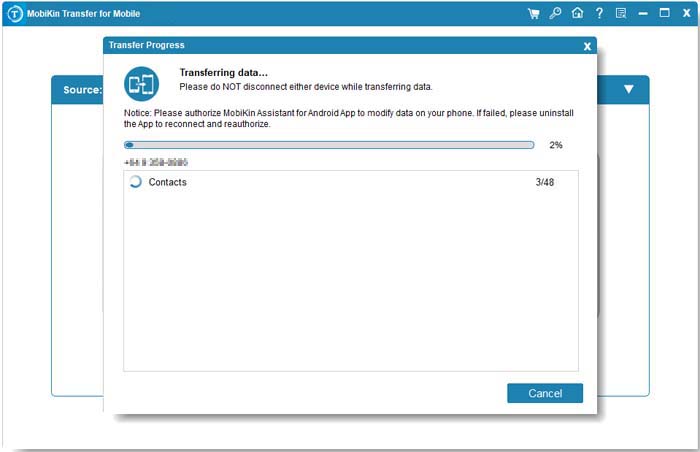
Step 3: Start the Transfer Process
Click on the "Start Copy" button to begin the data transfer process. The program will ensure all selected data is copied from one device to the other.
Video Guide:
Related Articles:
Top 6 Best Xiaomi Mi Mover Alternatives 2025 [Must-read]
5 Best Methods to Transfer Data from iPhone to POCO



